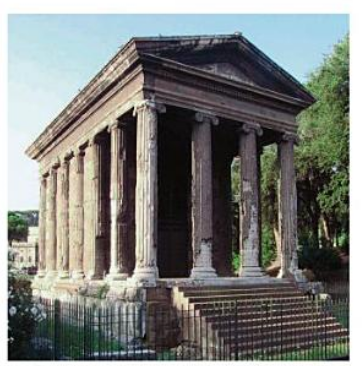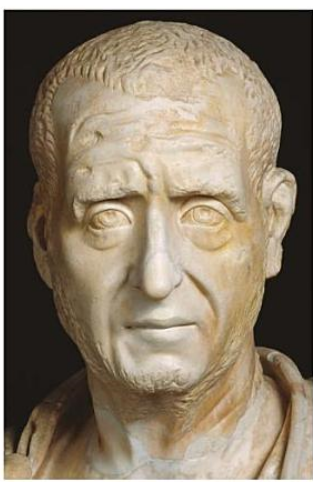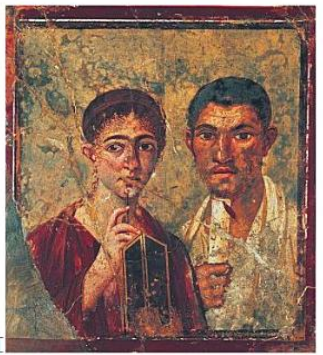In the course of its history, the civilization of Ancient Rome incorporated and modified the elements of those cultures which it dominated. This argument is particularly relevant if one speaks about Roman art which includes painting, architecture, or sculpture. This paper is aimed at examining foreign influences on the Roman art. One can argue that Romans were able to adapt, modify, and sometimes improve the artistic techniques which they borrowed from others. This is the main argument that can be put forward.
One of the examples can be considered is the Temple of Portunus. This architectural monument can be dated back to the first century before the Common Era. This building represents the Republican period in the history of Ancient Rome.

Overall, this architectural work incorporates the elements of Greek and Etruscan art. For example, one can mention that Temple of Portunus includes such elements as columns, pediment, cella, and extensive use of marble. In turn, the main Etruscan influences can be exemplified with such elements as high stairs, podium, and front entrance.
Overall, the architectural style developed in Ancient Greece strongly influenced people who created Temple of Portunus. To a great extent, this temple bears a close resemblance to Parthenon. This example indicates that Romans did not neglect the culture of countries or regions which they dominated.
Additionally, it is important to speak about Roman sculpture which was also affected by other cultures. One should take into account that Romans produced copies of Greek sculptures such as Apollo Belvedere.To a great extent, Romans were impressed with the meticulous techniques used by Greet sculptures.
Yet, one should remember that they modified the legacy of Ancient Greece. In particular, Romans insisted on the realistic portrayal of subjects without idealizing the physical beauty of a person. This style is often called verism, and it is a forerunner of modern realism.
For example, one can mention such an artwork as the bust of Trojan Decius. This sculpture was created in 249 C. E. The viewers can see that the artist did not try to idealize the physical appearance of the subject. This is one of the main aspects that can be identified because it distinguishes Roman sculpture among other styles and traditions. This sculpture was created during the period of the Late Empire and it shows that even at the height of Roman political and cultural domination, Greek art still greatly appealed to them.

Furthermore, it is important to speak about painting, especially frescos. One can argue that this technique was widely adopted by Etruscans. A good example of this technique is the portrayal of a husband and wife. This artwork was found in Pompeii. It was created in the first century of the Common Era which is the period of the Early Empire. Again, one can say that the author of this fresco attempted to emphasize the realism of his artwork. This is one of the main things that should be considered.

These examples are important because they demonstrate that Romans were willing to use the artistic techniques used in other cultures. This openness is one of the reasons why Romans could produce magnificent artworks. However, one should not suppose that they merely copied the artworks created by others. In many cases, they modified foreign influences and in this way, produced unique sculptures, paintings, or architectural monuments.
Works Cited
Furtwangler, Adolf. Masterpieces of Greek Sculpture: A Series of Essays on the History of Art, Cambridge: Cambridge University Press, 2010. Print.
Gardner, Helen, and Fred Kleiner. Gardner’s Art Through the Ages: A Global History, New York: Cengage Learning, 2012. Print.
Gates, Charles. Ancient Cities: The Archaeology of Urban Life in the Ancient Near East and Egypt, Greece, and Rome, London: Routledge, 2003. Print.